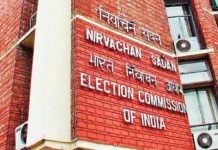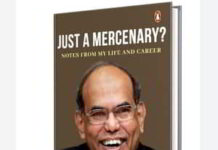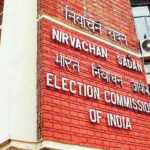The Governors-General were originally the head of the British administration in India during Colonial rule. The office was created in 1773, with the title of Governor-General of the Presidency of Fort William. The officer had direct control only over Fort William but supervised other British East India Company officials in India. Complete authority over all of British India was granted in 1833, and the official came to be known as the “Governor-General of India”.
Governors of Fort William in Bengal (1757-1772) –
- Roger Drake (1757)
2. Robert Clive (First Administration; 1757-1760)
3. Holwell (Officiating; 1760)
4. Henry Vansittart (1760-1765)
5. Robert Clive (Second Administration; 1765-1767)
6. Established Dual Government in Bengal from 1765-72
7. Bengal White Mutiny by white brigades at Allahabad and Monghyr
8. Harry Verelst (1767-1769)
9. Cartier (1769-72)
Governor Generals (1773-1858) –
Warren Hastings (1773-1785) –
Became Governor in 1772 and Governor-General in 1773 through Regulating Act of 1773
- His four councillors were Clavering, Francis, Monson and Barwell
2. Abolished Dual system(1767-1772) of administration (1772)
3. Auctioned the right to collect land revenue to the highest bidder (1772)
4. Divided Bengal into districts and appointed Collectors (1772)
5. Rohilla war(1774) and annexation of Rohilkhand by the Nawab of Awadh with the help of Britishers.
6. Treaty of Surat (1775) between Raghunath Rao and Warren Hastings, but Council of Calcutta rejected it
7. Nanad Kumar incident (1775)
8. Treaty of Purandar (1776) between English and Peshwa
9. Refined Hindu and Muslim laws. A translation of the code in Sanskrit appeared in 1776 under the title of “Code of Gentoo Laws”
10. Chait Singh (Banaras Raja) affair (1778)
11. James Augustus Hickey started a weekly paper called Bengal Gazette or Calcutta General Advertiser (1780)
12. First (1st) Anglo-Maratha War (1776-82) and Treaty of Salbai(1782)
13. Begums of Oudh / Awadh affair (1782)
14. Founded Asiatic Society of Bengal with William Jones in 1784
15. Pitts India Act of 1784
16. Second (2nd) Anglo-Mysore War (1780-84) and Treaty of Mangalore (1785) with Tipu Sultan
17. Started Diwani and Faujdari adalat at the district level and Sadar diwani and Nizamat adalats (appellate courts) at Calcutta.
18. Wrote introduction to the first English translation of the Gita by Charles Wilkins
Lord Cornwallis (1786-1793) –
- Sanskrit Collegewas founded in Banaras (1791) by Jonathan Duncan
2. New Police System was introduced in 1791
3. Third (3rd) Anglo-Mysore War – defeat of Tipu Sultan (1790-92)
4. Treaty of Seringapatam (1792)
5. Cornwallis code, based on separation of powers, was introduced – Codify law – separated the financial / revenue from the judicial functions / administration (1793)
6. Created post of district judge (1793)
7. Introduced Permanent Settlement in Bengal (1793)
8. Known as the father of the Civil Services in India
Sir John Shore (1793-1798) –
- First (1st) Charter Act was introduced (1793)
2. Battle of Kurdla / Kharda / Khadrabetween Nizam and the Marathas (1795)
3. Planned Permanent Settlement with Cornwallis and later succeeded him (1793)
4. Famous for his Policy of Non-Interference
Lord Wellesley (1798-1805) –
- Introduced the Subsidiary Alliance system to achieve British paramountcy (1798). The states that signed the alliance were – Hyderabad (first to sign) in 1798 and then Mysore, Tanjore, Awadh, Jodhpur, Jaipur, Mecheri, Bundi, Bharatpur and Berar
2. First treaty with Nizam (1798)
3. Fourth (4th) Anglo-Mysore war(1799) – defeat and death of Tipu Sultan
4. Second Anglo-Maratha War (1803-1805) – defeat of the Sindhiya, the Bhonsale and the Holkar
5. Formation of Madras presidency (1801) during his tenure after the annexation of the kingdoms of Tanjore and Carnatic
6. Treaty of Bassein (1802) with Peshwa
7. Lord Lake captured Delhi and Agra and the Mughal emperor was put under Company’s protection
8. Described himself a Bengal Tiger
Sir George Barlow (1805-1807) –
- Sepoy Mutiny of Vellore (1806)
2. Tried towords restoration of peace with Scindhia and Holkar
Lord Minto (I) (1807 -13) –
- Sent the mission of Malcolm to Persia and that of Eliphinston to Kabul (1808)
2. Treaty of Amritsar (1809) – with Ranjit Singh
3. Charter Act of 1813
Lord Hastings (1813-1823) –
- Anglo-Nepalese (Gurkha / Gorkha)war (1813-1823)
2. Treaty of Sugauli / Segowlee / Sequelae (1816) – between the East India Company and King of Nepal
3. Treaty of Poona (1817) with Peshwa
4. Anglo-Maratha War III (1817-1818)
5. Pindari war (1817-1818)
6. Creation of Bombay Presidency (1818)
7. Ryotwari settlement in Madras by Thomas Munro, the Governor (1820)
8. Mahalwari system of land revenue was made in North-West province by James Thomson.
9. Adopted the Policy of Intervention and War
10. Considered Rajputs as the natural allies
Lord Amherst (1823-28) –
- Burmese war I (1824-1826)
2. Treaty of Yandaboo(1826) – with lower Burma (Pegu) by which British merchants were allowed to settle in southern coast of Burma and Rangoon
3. Acquisition of territories in Malay Peninsula (1824)
4. Capture of Bharatpur (1826)
Lord William Cavendish – Bentinck (1828-35) –
- Father of Modern Western Educationin India
2. Abolition / Prohibition of Sati (1829)
3. Banned female infanticide (1829)
4. Suppression of thuggee / thugs (1829-35) – Military operations led / curbed by William Sleeman – 1830
5. Annexed Mysore (1831), Coorg (1834), Central Chachar (1834) on the plea of misgovernment
6. Charter Act / Regulation of (1833) – Martins Bird (Father of land revenue settlement in North)
7. Agra was created as province (1834)
8. Macaulay’s minutes on Education (1835)
9. English was made the official language of India (1835)
10. Abolition of provincial court of appeal and circuit set up by Cornwallis
11. Appointment of commissioners of circuit and revenue
Sir Charles (Lord) Metcalfe (1834-1836) –
- Passed Press Law
Lord Auckland (1836-1842) –
- First Afghan War (1836-42)
Lord Ellenborough (1842-1844) –
- Termination of First Afghan Wars (1842)
2. Annexation of Sindh (1843)
3. War with Gwalior (1843)
4. Abolition of slavery in India in year (1844)
Lord Hardinge (1844-48) –
- First Sikh war (1845-1846)
2.Treaty of Lahore (1846) – end of Sikh sovereignty in India
3. Prohibition of female infanticide and human sacrifice among Gonds of central India
Lord Dalhousie (1848-56) –
- Abolished Title and Pension
2. Sikh War II (1845-1846)
3. Annexation of Punjab (1849)
4. Application of Doctrine of Lapse – Captured Satara (1848), Jaipur and Sambalpur (1849), Baghat (1850), Udaipur (1852), Jhansi (1853) and Nagpur (1854)
5. Burmese war II (1852)
6. Annexation of Berar (1853)
7. Charter Act of 1853
8. Introduction of Railways (32 km) between Bombay -Thana (1853)
9. Services of Telegraph between Calcutta – Agra (1853)
10. Postal system (1853)
11. Recruitment of the Civil Service by competitive examination (1853)
12. Woods Dispatch(1854)
13. Widow Remarriage Act (1856)
14. Santhal uprising (1855-56)
15. Annexation of Oudh (1856)
16. Three Universities established in Calcutta, Bombay and Madras (1857)
17. Introduced Bon-Regulation System – the system of centralized control in newly acquired territories
18. Founded the Public Work Department (P.W.D)
19. Raised Gorkha Regiment
20. Shimla was made summer capital of British India


















